As a school child Ooty was our favourite destination and we used to end up there almost every second year. The weather, the location and chocolates used to charm us. But now, when I have decided to climb this hill station on a bicycle I decided to read a bit more about this place and what I found was exciting. There was much more than the chocolates, tea and the botanical gardens that Ooty has to offer. Here is a list of 12 unique facts that you probably didn’t know about Ooty but is worth knowing.
- The City was formed as a ‘House of invalids’. After the fall of Tipu Sultan in 1799, the Nilgiris was under the British, mainly for military reasons. The colonial power did not want the Nilgiri hills to become a refuge for its opponents or a haven for insurgents. But few dared to explore it until 1819 when the Collector of Coimbatore Mr John Sullivan himself, with a detachment of European and Madras

The Stone house in 1905, with a tree called Sullivan’s oak in the foreground
Sepoys set out to explore the Nilgiris, in which he lost several of his men. After touring the area, he gave a report stating that the location’s “unusually temperate and healthy” climate made it ideal as a “resort of invalids,” primarily soldiers. That was the birth of modern day Ooty. In the years to come, he fell in love with the place, settled here and constructed his residence which is known as the Stone House. A detailed account of his adventurous and arduous journey is narrated in this article published by The Hindu on 17 Mar 2002. (http://www.thehindu.com/thehindu/mag/2002/03/17/stories/2002031700210800.htm)
- Summer capital of Madras Presidency. Ooty was
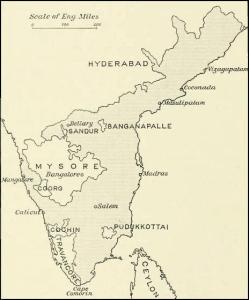 the summer capital of the Madras Presidency of the East India Company of the British. The Madras Presidency included the present day Tamil Nadu, Northern Kerala and parts of Andhra Pradesh and Karnataka. There was a time it even included present Srilanka, then known as the island of Ceylon, also under its domain (1793 to 1798). Well, that is a fact for a city to be proud of. It was common site for British officers to nestle to this place to enjoy the ‘English like climate’ that Ooty had to offer.
the summer capital of the Madras Presidency of the East India Company of the British. The Madras Presidency included the present day Tamil Nadu, Northern Kerala and parts of Andhra Pradesh and Karnataka. There was a time it even included present Srilanka, then known as the island of Ceylon, also under its domain (1793 to 1798). Well, that is a fact for a city to be proud of. It was common site for British officers to nestle to this place to enjoy the ‘English like climate’ that Ooty had to offer. - The birthplace of Snooker.
 The game of Snooker was invented over a century ago at the Ootacamund Club. A notice in the billiards room explains that Colonel Sir Neville Francis Fitzgerald Chamberlain
The game of Snooker was invented over a century ago at the Ootacamund Club. A notice in the billiards room explains that Colonel Sir Neville Francis Fitzgerald Chamberlain
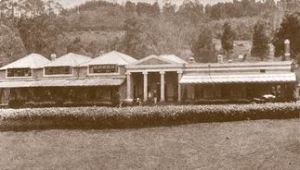
An old photograph of the Ootacamund Club
of the British Army shouted “snooker” (the word for a junior cadet at the Officers Academy at Woolwich) when his opponent failed to pot a ball, one rainy afternoon at the Club. Soon he and the other players developed first official set of rules of the game in 1882.
- The Ooty Lake is a manmade structure. The Ooty Lake was created between 1823 and 1825 by the then Collector of Coimbatore Mr John Sullivan as a source for irrigation and fishing. It extends over an area of 65 acres.
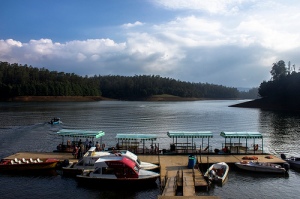 It was turned to a tourist facility by the Tamil Nadu Tourism Development Corporation in 1973. But unfortunately today due to the poor up keep and heavy littering by the tourists it is identified as the dirtiest water body in the whole of Tamil Nadu.
It was turned to a tourist facility by the Tamil Nadu Tourism Development Corporation in 1973. But unfortunately today due to the poor up keep and heavy littering by the tourists it is identified as the dirtiest water body in the whole of Tamil Nadu. - The Steepest Railways in Asia. At a gradient of 1 in 12.28
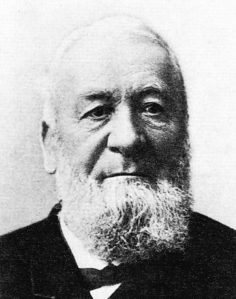
Mr Niklaus Riggenback, engineer and locomotive builder. The brain behind the Nilgiri Mountain Railways
between Conoor and Mettupalayam, the Nilgiri Mountain Railway is the steepest in Asia and was officially opened on 11 August 1898 by the Governor of Madras, Sir Arthur Elibank Havelock. Running on rack and pinion arrangement, it has a very close connection with the best Railway system in the world i.e. the Swiss Railway. It was conceptualized by the Swiss Engineer, Mr Niklaus Riggenback
who constructed the world famous Riggi Mountain Railways in Lucerne, Switzerland. This document (http://nilgiris.nic.in/images/salemdiiv_sr_comm.pdf) of the Indian Railway gives a vivid description of ‘Tracing the Roots of the Nilgiri Railways’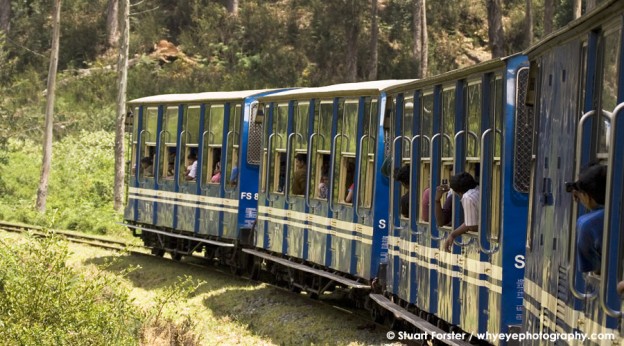
- Home to a UNESCO World Heritage site. The Nilgiri Railways is a
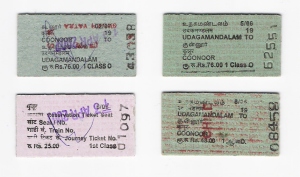
A 2007 dated Ooty – Coonor Endmondson style ticket
‘UNESCO World Heritage Site’. It was declared in July 2005 as an extension of the Darjeeling Himalayan Railway. It covers a distance of 45 kilometres (26 mi) in 4 hours, 50 minutes and has 208 curves, 16 tunnels and 250 bridges. To preserve the ‘World Heritage Site’ status of the railway it still issues Edmondson style manual tickets for the Ooty-Mettupalayam journey. It was featured in a historical documentary by the BBC in February 2010.
- The Slowest Train in India. The Nilgiri Mountain Railway also has the
 record of being the slowest train in India averaging 10 kmph. That means you can literally walk out from the train, have a sip of the famous Nilgiri tea and get back in the train without much difficulty. You could even try a race with this train on your bicycle. Quite exciting isn’t it.
record of being the slowest train in India averaging 10 kmph. That means you can literally walk out from the train, have a sip of the famous Nilgiri tea and get back in the train without much difficulty. You could even try a race with this train on your bicycle. Quite exciting isn’t it. - Highest Mountain Peak in Tamil Nadu.
 DodaBetta Peak, located 9 km from Ooty, on the Ooty-Kotagiri Road, is the highest Peak in Tamil Nadu and probably the fourth highest in South India at a height of 2,637 metres (8,650 feet), the highest in South India being Anamudi in Kerala, 2,695 metres (8,842 ft). No wonder it is said, “you reach Ooty, you can see the rest of TamilNadu!”.
DodaBetta Peak, located 9 km from Ooty, on the Ooty-Kotagiri Road, is the highest Peak in Tamil Nadu and probably the fourth highest in South India at a height of 2,637 metres (8,650 feet), the highest in South India being Anamudi in Kerala, 2,695 metres (8,842 ft). No wonder it is said, “you reach Ooty, you can see the rest of TamilNadu!”. - Birth place of Michael Colin Cowdrey.
 Thanks to the British rule and the Britishers’ love to this place and cricket, the legendary English batsman Michael Colin Cowdrey, was born in Ooty on 24 December 1932. He is known as the prodigy in cricket who learned to bat as soon as he could walk. He played for England from 1954 to 1975. He is the first cricketer in the history to play 100 test matches.
Thanks to the British rule and the Britishers’ love to this place and cricket, the legendary English batsman Michael Colin Cowdrey, was born in Ooty on 24 December 1932. He is known as the prodigy in cricket who learned to bat as soon as he could walk. He played for England from 1954 to 1975. He is the first cricketer in the history to play 100 test matches. - Home to the Oldest Military Institution in India. The Defence Service Staff College, Wellington,
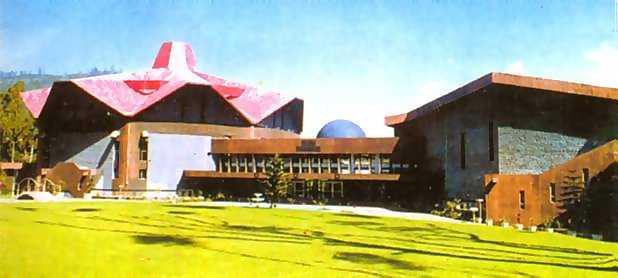 founded in 1905 is one of the oldest military institutions in India. It was relocated to Wellington from Quetta, Pakistan due to partition. It offers training to the three services, paramilitary forces and even to some Civil Service officers including officers from friendly foreign countries. No wonder most of the movies related to Army has some scenes shot at this place.
founded in 1905 is one of the oldest military institutions in India. It was relocated to Wellington from Quetta, Pakistan due to partition. It offers training to the three services, paramilitary forces and even to some Civil Service officers including officers from friendly foreign countries. No wonder most of the movies related to Army has some scenes shot at this place. - One of the most filmed location in India. The natural beauty of this hill station is any photographers delight.
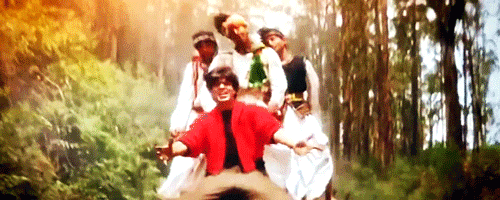 Ooty has featured in a staggering 250+ movies from Bollywood, Hollywood and regional languages. The first Bollywood movie filmed here was Karz released in the 80’s. Who can forget the grooves of Sharukh Khan to Chaiyya Chaiyya over the mountain trains and the sleepy Conoor station featuring in the 1984 Hollywood flick, ‘A Passage to India’ by David Lean. All my Mallu friends will remember the same station in the film ‘Summer in Bethlehem’.
Ooty has featured in a staggering 250+ movies from Bollywood, Hollywood and regional languages. The first Bollywood movie filmed here was Karz released in the 80’s. Who can forget the grooves of Sharukh Khan to Chaiyya Chaiyya over the mountain trains and the sleepy Conoor station featuring in the 1984 Hollywood flick, ‘A Passage to India’ by David Lean. All my Mallu friends will remember the same station in the film ‘Summer in Bethlehem’. - Ooty is a premium education hub. Taking advantage of the cool climate, many premium educational institutions is located here which provide some of the best educational facilities in India. Just considering the elite institutions, there would be more than 60 boarding schools in and around Ooty. The Lawrence, Good Shepherd, Hebron just a few international schools located here.
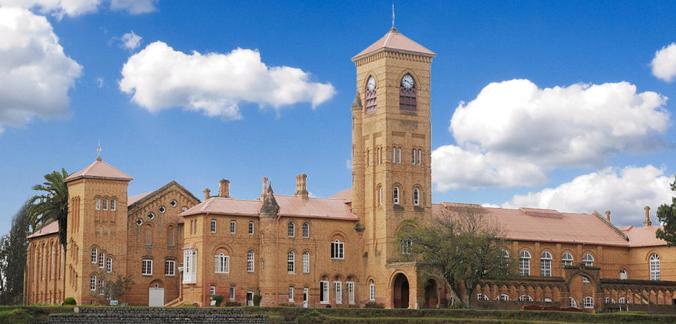
Unfortunately the rising tourism has taken its toll on this beautiful city. Presently it is reeling under pollution, traffic jam, sewage disposal issues, deforestation and increasing temperature. The Ooty lake is the best example of this, earning the title as the most polluted water body in Tamil Nadu.
I appeal to you all to visit this place at the same time preserve it, as you would do at your own home. Let this beautiful place continue to be so for the generation to come…..
Hey nice article
Though I haven’t been to Ooty, your concept is pretty cool and I could relate to it
Cheers 🙂
LikeLike
Thanks for those encouraging comments!
LikeLike
Hey sir,
Your article is very informative.
LikeLike